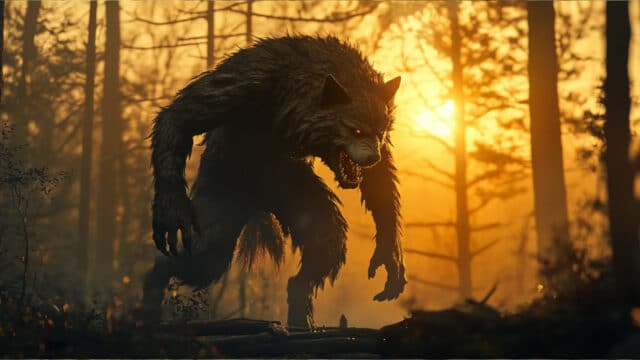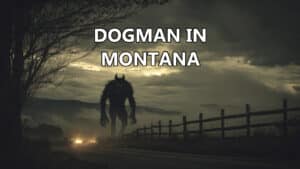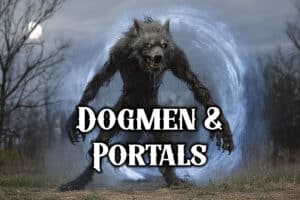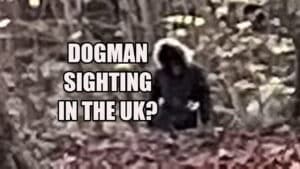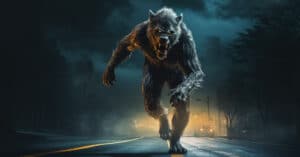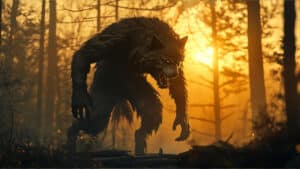
A Tragic Night in Knott County
Do Dogmen stalk the dense forests of Knott County, Kentucky? Those old, dark forests hold secrets that whisper through the pines.
On August 11, 2020, a tragedy struck that left the small community reeling. A 12-year-old boy was fatally attacked in what authorities called a “pack of wild dogs” incident.
News outlets, like WKYT and WYMT, reported the grim details: the boy was found dead with injuries consistent with a canine attack. But whispers on platforms like Reddit’s r/dogman suggest a different culprit—a creature known as the Dogman, a half-human, half-canine beast said to stalk rural America.
Could this cryptid, not a pack of feral dogs, be responsible? The official narrative raises questions, and eerie parallels to another case, the death of Brenda Hamilton, fuel speculation.
Let’s explore the evidence, inconsistencies, and chilling possibility that a Dogman prowled Knott County that night.
The Knott County Attack
On that fateful August night, a 12-year-old boy was attacked near his home in Knott County.
According to WKYT, Kentucky State Police responded to a call about an animal attack. The boy was pronounced dead at the scene, with injuries attributed to a pack of wild dogs. WYMT’s report echoed this, noting the boy’s injuries were consistent with canine bites and scratches.
No witnesses saw the attack, and no specific details about the dogs—number, breed, or behavior—were released.
The Knott County Coroner confirmed the cause of death but offered little beyond the official statement: a tragic encounter with feral animals. Yet, the lack of detail sparks curiosity.
Were these truly stray dogs, or was something else lurking in the shadows?
Never Miss A Paranormal Story!
Newsletter subscribers get insider access to the latest paranormal posts!
Your email is safe with us and you can unsubscribe at any time!
The mainstream explanation—a pack of wild dogs—seems straightforward, but cracks appear under scrutiny.
First, while KSP found dogs near an old mine site, no evidence confirms they formed a coordinated pack. Rural areas like Knott County often have stray dogs, but a pack large enough to kill a human is rare.
Feral dogs typically avoid humans, scavenging rather than attacking.
The DNA evidence, per KSP, links some dogs to Corey, but details are vague. What specimens were tested—fur, saliva, or blood? How many dogs were involved? The lack of transparency raises doubts. Could the dogs be a convenient scapegoat for a more mysterious predator?
Second, the timing and location fuel suspicion. The attack occurred at night in a wooded, rural area—prime territory for cryptid sightings. Dogman reports often describe a solitary creature with immense strength, capable of inflicting severe damage. A single, powerful entity could explain the attack better than a hypothetical pack, especially if the DNA evidence is inconclusive or misattributed.
The discussion on Reddit about this case questions the official story, with users noting that Dogman encounters in Kentucky align with the attack’s ferocity and lack of clear pack behavior.
Third, the speed of the official conclusion feels rushed. Authorities labeled it a dog attack within hours, per WKYT and WYMT, and the later DNA findings seem to seal the case. Yet, no investigation into alternative predators—like bears or a lone wolf—was noted, despite Kentucky’s diverse wildlife.
The focus on dogs, especially with limited public disclosure about the DNA matches, suggests a need to quell public fear. Are the dogs being blamed to avoid a deeper mystery?

The Brenda Hamilton Case: A Haunting Parallel
The Knott County attack isn’t an isolated incident.
In 2019, Brenda Hamilton was mauled to death in Pender County, North Carolina, in what was also called a wild dog attack.
Hamilton was found with severe injuries after walking her dogs. Like Knott County, the official narrative pointed to feral dogs, but inconsistencies emerged.
Witnesses reported no pack in the area, and Hamilton’s injuries—deep lacerations and bites—suggested a single, powerful predator.
The similarities are striking: rural settings, nighttime attacks, vague canine evidence, and no confirmed pack. Both cases share a rushed conclusion, with authorities dismissing cryptid theories despite local whispers.
What is the Dogman?
For the uninitiated, the Dogman is a cryptid described as a seven-foot-tall creature with a dog’s head, human-like torso, and amber or blue eyes. Its howl, per witnesses, mimics a human scream.
The legend, popularized in Michigan, gained traction after a 1987 radio prank by DJ Steve Cook, but sightings predate this, stretching back to 1887 in Wexford County.
Reports span the U.S., including Kentucky, where dense forests provide perfect cover. Unlike Bigfoot, the Dogman is said to be aggressive, with some accounts, like a Michigan trucker’s 2017 encounter, claiming it can withstand gunfire. Could such a creature, not a pack of dogs, explain the Knott County tragedy?
You Might Also Like:
Witness Accounts and Local Lore
While no direct witnesses saw the Knott County attack, Reddit’s r/dogman thread highlights local speculation.
Users like u/CryptidHunterKY note recurring sightings of a “large, upright canine” in eastern Kentucky, with one claiming, “It wasn’t a dog—it moved like a man.” These accounts, though unverified, align with Dogman descriptions: a solitary creature with unnatural speed and strength.
In the Brenda Hamilton case, a neighbor saying, “No dogs around here could do that. It was something else.” Both regions share a history of cryptid lore, with Kentucky’s Appalachian foothills rich in tales of strange beasts.
The lack of verified dog pack sightings in either case bolsters the Dogman theory.
Skeptical Perspective: Could It Be Dogs?
Skeptics argue feral dogs are the likeliest culprits. Stray dogs can form packs and, in rare cases, attack humans, especially in rural areas with limited resources.
A 2018 study from the Journal of Veterinary Behavior notes feral dog attacks are uncommon but possible, particularly on children or the elderly. However, the study emphasizes packs leave clear evidence—tracks, scat, or sightings. In Knott County, no such evidence was reported.
Similarly, in Hamilton’s case, no pack was confirmed. Skeptics might also point to bears, but Kentucky’s bear population is small, and no bear tracks were noted.
Misidentification is possible, but the absence of concrete evidence weakens the dog pack narrative.
Expert Insights: Cryptid or Canine?
Cryptozoologist Dr. Jeff Meldrum, known for Bigfoot research, suggests Dogman sightings could stem from misidentified animals or folklore. “Bears standing upright can resemble a humanoid figure,” he told The Mirror in 2022. Yet, he admits some reports defy easy explanation, especially those describing a single, powerful creature.
In contrast, Nick Redfern, a paranormal researcher, supports the Dogman theory, noting consistent sightings across the U.S. “The Dogman isn’t just a story—it’s a pattern,” he said in a 2022 Mirror interview.
In Knott County, the lack of dog pack evidence leans toward Redfern’s view. No wildlife expert quoted in the news reports confirmed a pack, leaving room for speculation.
Cultural and Historical Context
Kentucky’s Appalachian region is a hotbed for cryptid tales, from the Mothman to the Flatwoods Monster.
The Dogman fits this tradition, with local stories of “werewolf-like” creatures dating back decades. The Knott County attack, near the rugged Daniel Boone National Forest, occurred in terrain ideal for a stealthy predator.
The cultural weight of these stories amplifies suspicion. Why do authorities quickly dismiss cryptids when locals, like those on Reddit, insist something stranger is afoot?
The rush to blame dogs may reflect a reluctance to entertain the unknown.
A Mystery Unresolved
The Knott County tragedy and Brenda Hamilton’s death share eerie similarities: brutal attacks, vague canine evidence, and no confirmed dog packs. The official narrative feels incomplete, with gaps in evidence and rushed conclusions.
Could a Dogman, a creature steeped in folklore yet vivid in witness accounts, be the true culprit?
Locals believe it’s possible. While skeptics point to feral dogs, the lack of tracks, sightings, or forensic detail challenges their case.
The truth remains elusive, but one thing is clear: something stalks the shadows of rural America.
Have you seen something that you think might be a Dogman? If you have, email me your report to Reports@ParaRational.com.

